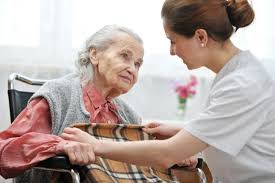Have a Cancer Patient? Contemplate Palliative Treatment
Cancer individuals can benefit greatly from palliative care. Even with the nagging aftereffects of the illness, the individual justifies the most effective standard of living possible. This kind of treatment is associated with supportive treatment, sign administration, or ease care. Fortuitously, qualified stores exist to offer support to cancer patients all through all phases of the fight with the disease. More information about quality palliative care
What's palliative attention?
From analysis, a cancer patient needs treatment and treatment, which includes pain administration, emotional ease, spiritual attention, and psychological care. While palliative treatment does not handle cancer, this system focuses on pain administration and unwanted effects brought by the disease.
Quality palliative attention must begin right from the full time someone is diagnosed with cancer through treatment to the conclusion of life. There's a distinction between palliative care and hospice care. While Hospice care provides ease and help to individuals with terminal ailments, palliative attention begins earlier in the conditions. This system operates simultaneously with treating cancer, unlike hospice care, which can be administered when all treatments have been exhausted and the patient might have just a short while to live.
Where can you get palliative attention?
While cancer administration could be accessible in just about any qualified mainstream health business, it is definitely sensible to strategy a ability that specializes in palliative treatment, specifically for cancer patients. Palliative care professionals focus on managing the symptoms, working with the medial side effects of the therapy, and giving psychological, spiritual, and mental support the patient wants to manage the situation. Click here Arcare
The target of a palliative program is to simply help the individual keep the most effective quality of life whilst he or she nears the conclusion of life. The specialists are a part of a diversified group to handle care. The staff comprises doctors, listed dieticians, competent nurses, social employees, and pharmacists. Psychology and chaplaincy experts will also be involved. The experts can offer guidelines to primary care companies of the patient when necessary. It can also be important to know that cancer people shouldn't leave their primary treatment for palliative treatment services. The two applications should work together till, maybe, when the cancer therapy fails to remedy the condition.
Palliative care improves all areas of living for a cancer patient
The main position of the experts is to greatly help a cancer individual deal with the condition and their signs entirely from examination to therapy and follow-up, to get rid of of life. When a patient signs up for palliative attention solutions, the specialists begin an application that would give attention to controlling the pain and apparent symptoms of the condition. In the long run, the in-patient has the capacity to get the most effective quality of life attainable at that moment. Common situations resolved include:
· Sleep problems
· Nausea and vomiting
· Constipation and diet issues
· Loss in appetite
· Religious and emotional issues
The staff comes up with a course based on the challenges the patient is grappling with, from bodily outward indications of the condition to coping with the worries and nervousness of a family group caregiver. If you would like to know more about house nursing services in Australia, consult ArCare. See more here https://arcare.com.au/palliative-care/
From analysis, a cancer patient needs treatment and treatment, which includes pain administration, emotional ease, spiritual attention, and psychological care. While palliative treatment does not handle cancer, this system focuses on pain administration and unwanted effects brought by the disease.
Quality palliative attention must begin right from the full time someone is diagnosed with cancer through treatment to the conclusion of life. There's a distinction between palliative care and hospice care. While Hospice care provides ease and help to individuals with terminal ailments, palliative attention begins earlier in the conditions. This system operates simultaneously with treating cancer, unlike hospice care, which can be administered when all treatments have been exhausted and the patient might have just a short while to live.
Where can you get palliative attention?
While cancer administration could be accessible in just about any qualified mainstream health business, it is definitely sensible to strategy a ability that specializes in palliative treatment, specifically for cancer patients. Palliative care professionals focus on managing the symptoms, working with the medial side effects of the therapy, and giving psychological, spiritual, and mental support the patient wants to manage the situation. Click here Arcare
The target of a palliative program is to simply help the individual keep the most effective quality of life whilst he or she nears the conclusion of life. The specialists are a part of a diversified group to handle care. The staff comprises doctors, listed dieticians, competent nurses, social employees, and pharmacists. Psychology and chaplaincy experts will also be involved. The experts can offer guidelines to primary care companies of the patient when necessary. It can also be important to know that cancer people shouldn't leave their primary treatment for palliative treatment services. The two applications should work together till, maybe, when the cancer therapy fails to remedy the condition.
Palliative care improves all areas of living for a cancer patient
The main position of the experts is to greatly help a cancer individual deal with the condition and their signs entirely from examination to therapy and follow-up, to get rid of of life. When a patient signs up for palliative attention solutions, the specialists begin an application that would give attention to controlling the pain and apparent symptoms of the condition. In the long run, the in-patient has the capacity to get the most effective quality of life attainable at that moment. Common situations resolved include:
· Sleep problems
· Nausea and vomiting
· Constipation and diet issues
· Loss in appetite
· Religious and emotional issues
The staff comes up with a course based on the challenges the patient is grappling with, from bodily outward indications of the condition to coping with the worries and nervousness of a family group caregiver. If you would like to know more about house nursing services in Australia, consult ArCare. See more here https://arcare.com.au/palliative-care/



Comments
Post a Comment